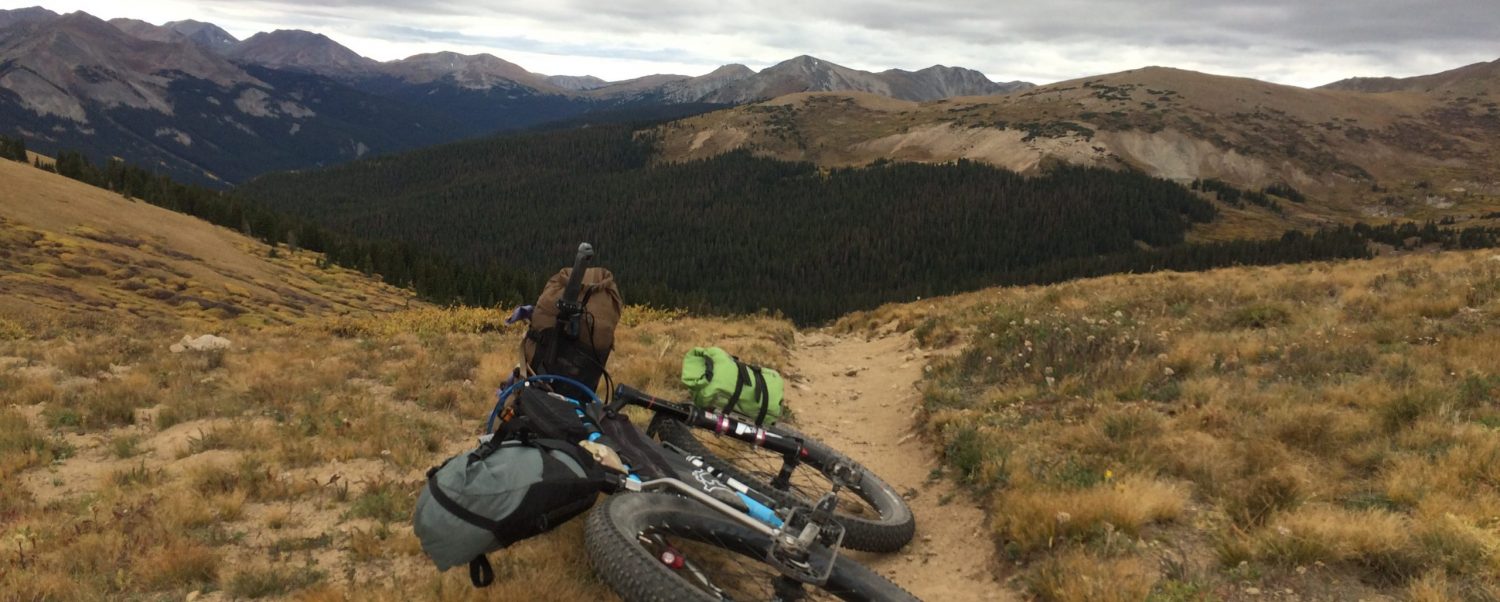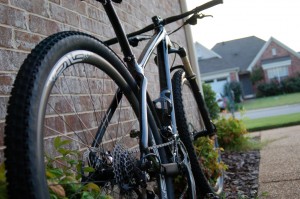Back sometime in March, I bought a pair of Enve’s carbon XC wheels. I have the 32 spoke model- they do come in 28 spoke, and the guy at Enve was very helpful when I called to talk about which ones I should get. He said that at my weight, I could definitely go 28 spoke and I’d have no problems. However, advice is what you ask for when you’ve already made up your mind.
These wheels are stiff.
It took being somewhat uncomfortable with my suspension setup at Ouachita Challenge to realize this. On my previous geared setup, I used crest rims and a REBA XX fork. Some people complain that particular fork is too soft. I really liked it. The SID XX World Cup fork is not as plush. It wasn’t until I bought a set of stiff wheels that I was forced to deal with my picky-ness in forks. I played around with air pressure for a while and found some improvement, but ultimately, I decided I’d try replacing the 5 weight oil in the damper with 2.5 weight. Perfection! My fork now feels more like the previous… only much lighter.
What’s this got to do with wheels?
My point is that when you go from wheels that are light and flexy (“noodly” if you will) to wheels that are equally as light but incredibly stiff, you’re forced to pay a lot more attention to your suspension setup and tire pressure. I don’t think it’s a downside to them at all, unless you’re the type that likes to be ignorant of those things.
The added stiffness translates to more direct steering. The improved accuracy means more precise moves through technical stuff and tight turns. Even at 145 pounds geared up, I notice this. If you’re a bigger person, the difference will likely be more dramatic. If you’re already riding a stiff bike like the Air9 Carbon, all of the awesome acceleration/handling characteristics that you love about the bike will be that much better.
The durability of these wheels has been amazing. I haven’t trued them once since I first started using them. I’ve done almost all of my training (outside of road training) and all of my racing on them. There are a couple of gouges in the carbon where I’ve come into contact with something that probably would have ended a crest rim. If you’re tired of disposable lightweight aluminum rims, pony up and get carbon. I’m reasonably certain it would take a catastrophic event to irreparably damage these wheels.
A lot of the strength of these wheels comes from the engineering and molding process. The rims are formed with a removable bladder (with most carbon rims, the bladder is made of nylon or other lightweight material and remains in the rim). The Enve bladder is proprietary and is removed during manufacturing. The biggest difference between these and other carbon rims is that the spoke holes are baked into the rim during the rim-making process (as opposed to drilling once the rim is complete). The small, molded-in holes mean that the spoke nipples are internal. That would be a pain in the ass (with tubeless tape, etc) when it came to truing, except that they just don’t need to be trued every time you hit a bump like with a traditional light aluminum wheel.
If you did happen to damage one, though, ENVE has an excellent crash replacement program.
Other upsides?
Made in the USA (not that stuff made overseas is necessarily bad… it’s just nice to know that the company is employing individuals on our side of the ocean). Politics, jobs, blah blah blah…
There’s nothing proprietary about them. The nipples could be a little hard to find at every shop- they’re an internal pillar-style, but if you’re looking to be well prepared and keep that stuff around, your local shop can get them (QBP Part #SP0450). The spokes are a DT aerolite bladed spoke. Once again, available through any bike shop. The actual lacing/tensioning process is traditional, too. (an example of a “non-traditional” build is the Easton rear wheel that requires de-tensioning/re-tensioning of the rear wheel in order to replace a spoke).
Hubs are whatever you want. I opted for the DT240 set that they offer on their website, but they’ll build whatever hubs you send them into a wheelset, or you can buy the rims and build them yourself. The only thing you can’t use are the Industry 9 spokes that thread in to the hubs- they don’t fit through those nice, small, molded-in spoke holes.
Complaints?
Tubeless setup is not as easy as a Stan’s rim. It’s not necessarily hard… it’s just not “unwrap a tire and seat it with a pump” easy. I found that for most new tires, I need to remove the valve core and apply plenty of soap to the bead in order to get it to seat.
I only have one real complaint about my wheelset…if you spray them with a hose, they’ll take on water. I’m guessing that if you submerged them while riding, it’d also happen. It’s hard to discern the sound of water in a rim from the sound of Stan’s in the tire, and the best way I’ve found to get the water out is to loosen the valve nut a little and flip the wheel around so that the water drips out. Kinda annoying, because a rim is the last place you’d want extra weight. Given the profile of the rim, though, I’m not sure how you’d prevent it.
All-in-all, I’m very happy with these wheels. I would love to get a set of the all-mountain-width rims to use with my singlespeed since I often use an Ardent 2.4 on it when I’m riding rigid. I’ve also switched to an Ardent 2.25 as a nearly-exclusive front tire for riding with suspension. I’d love to see the shape of that one on a wider profile rim.

